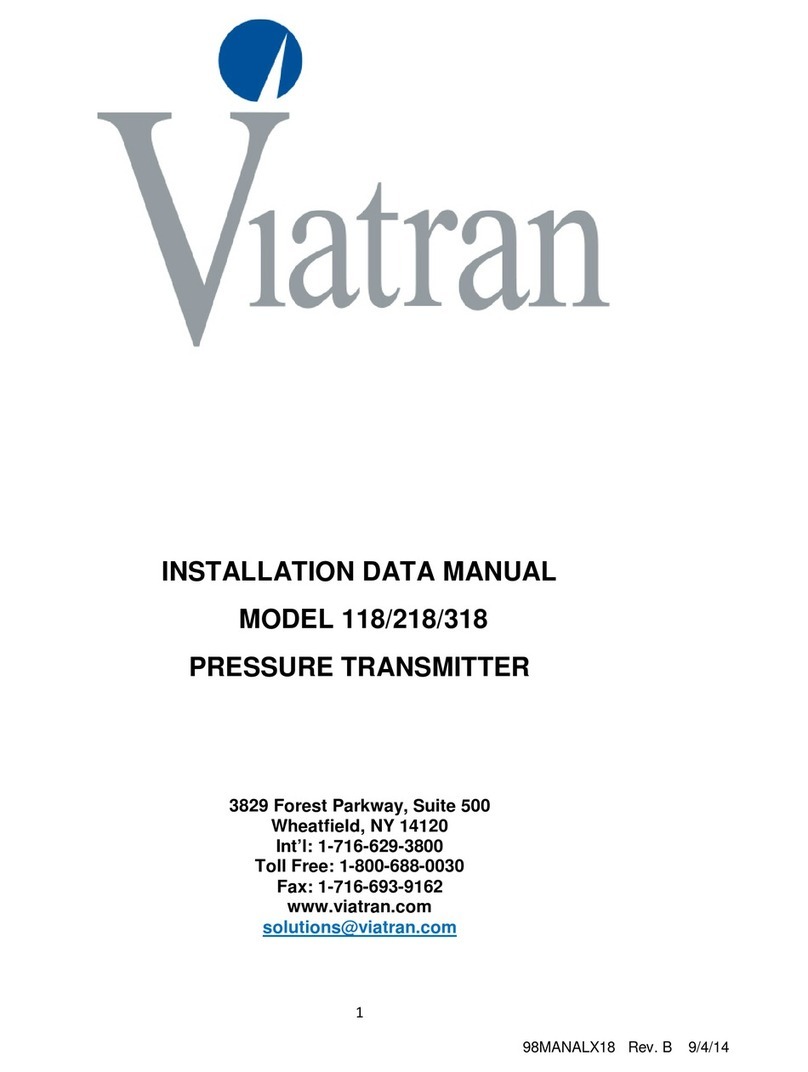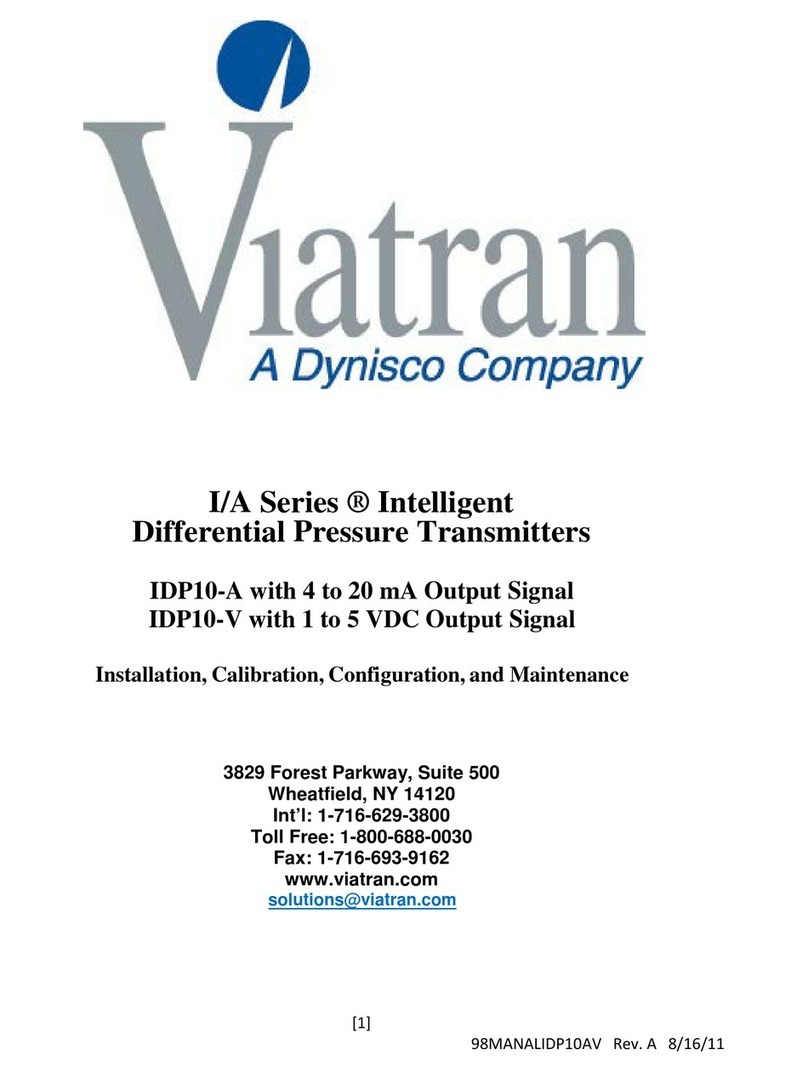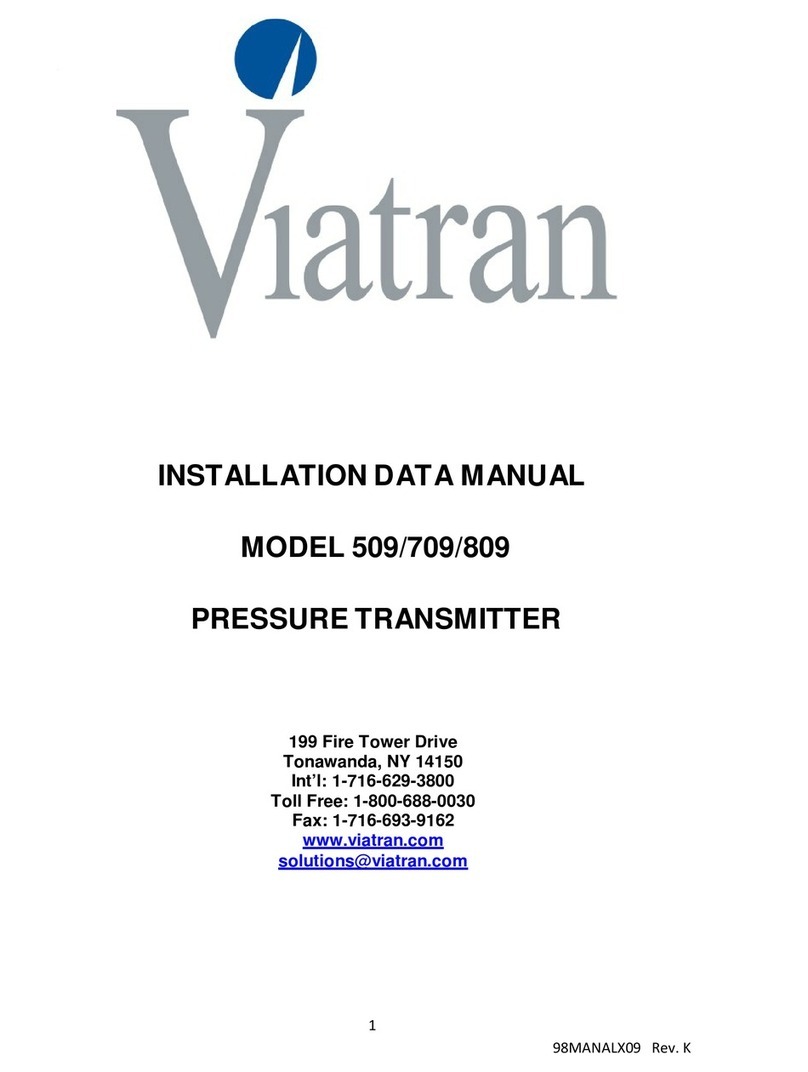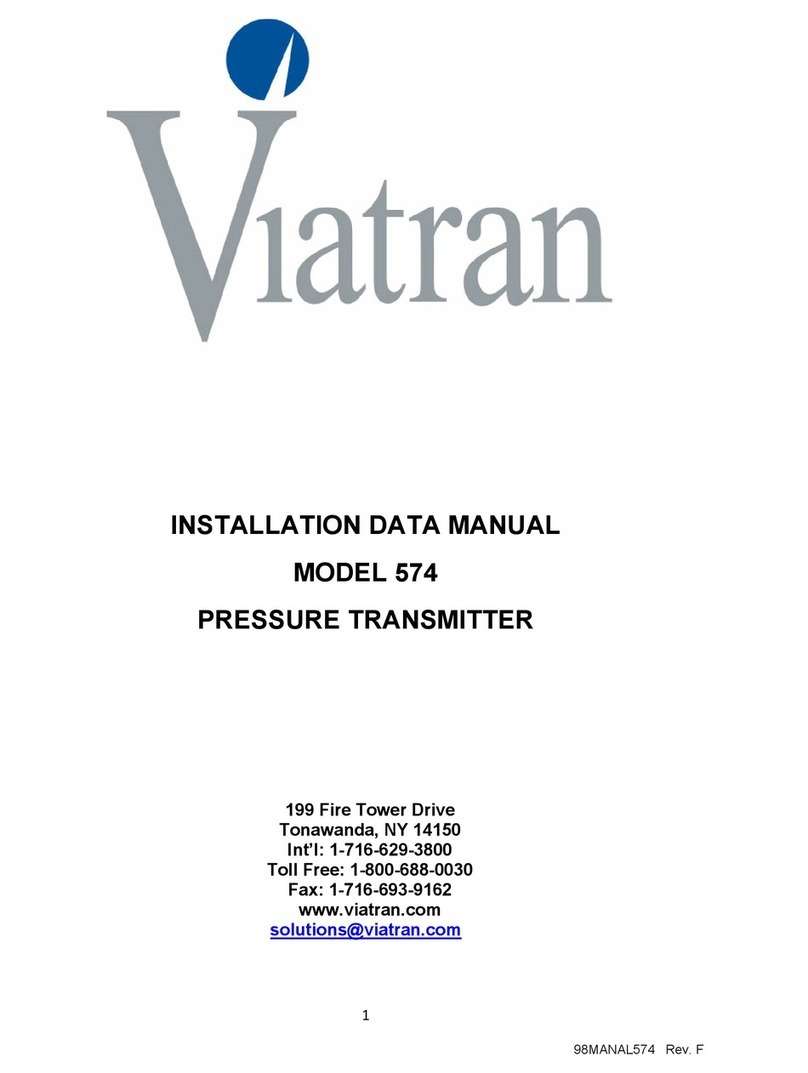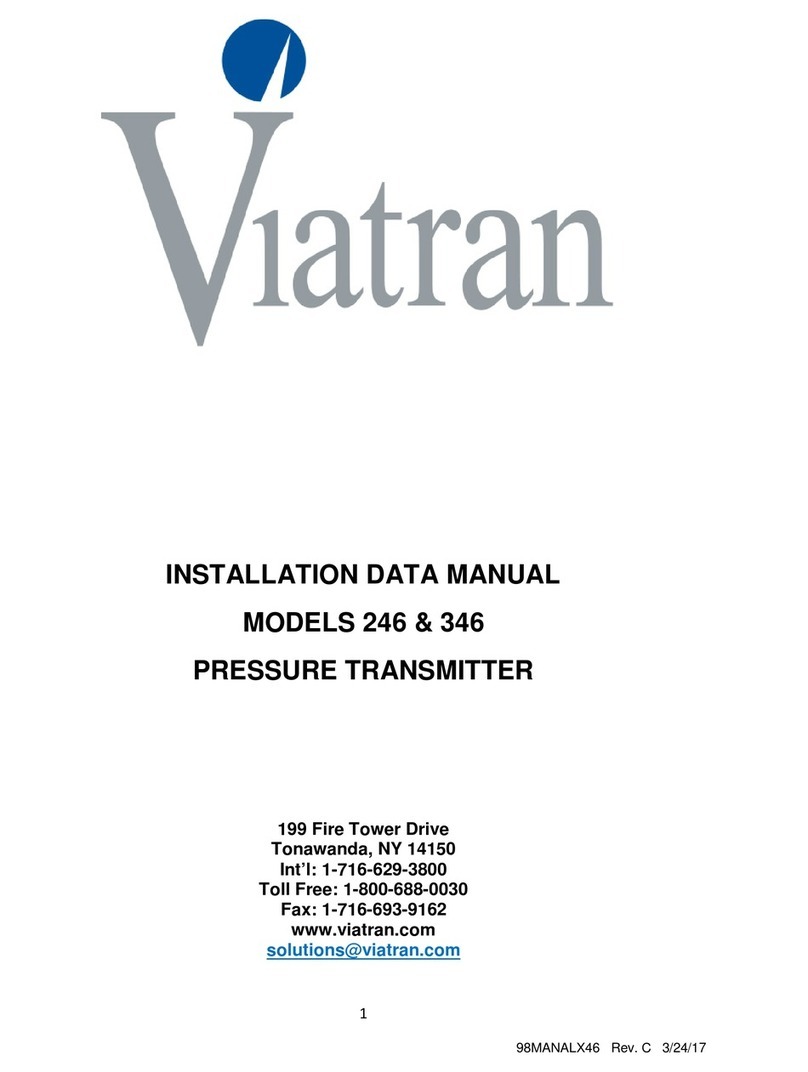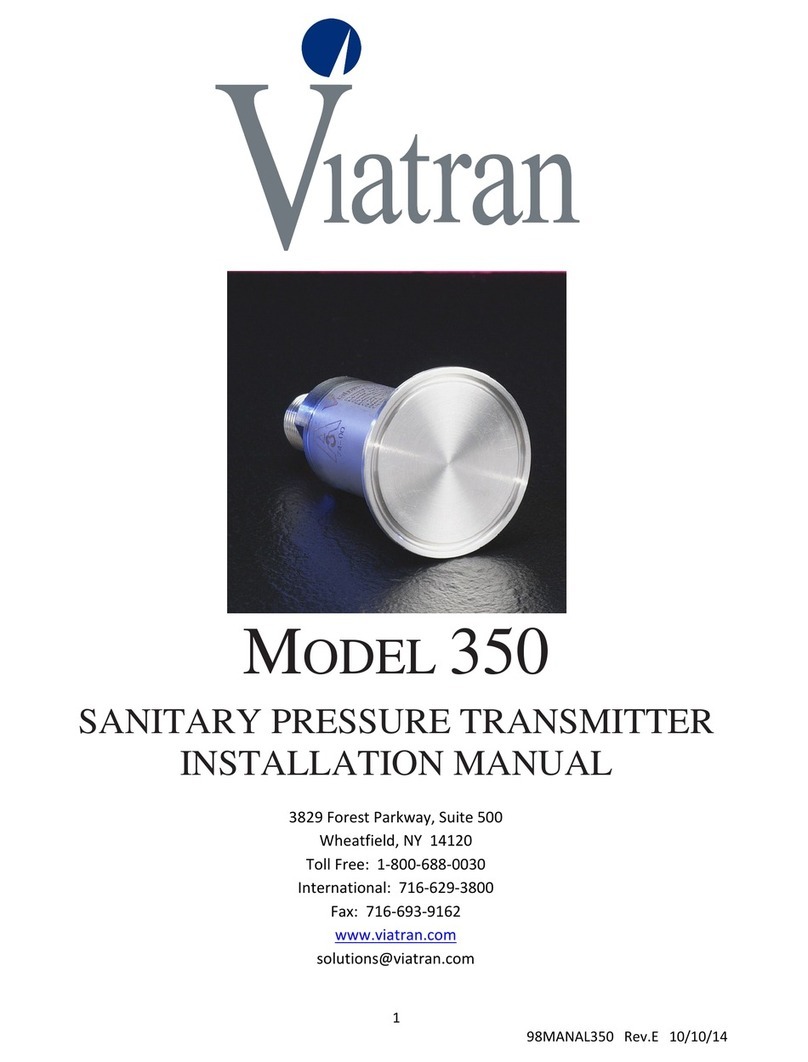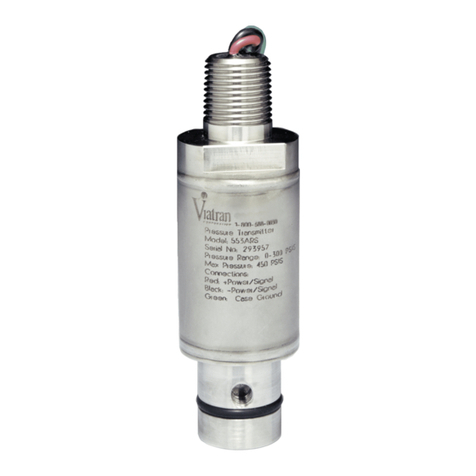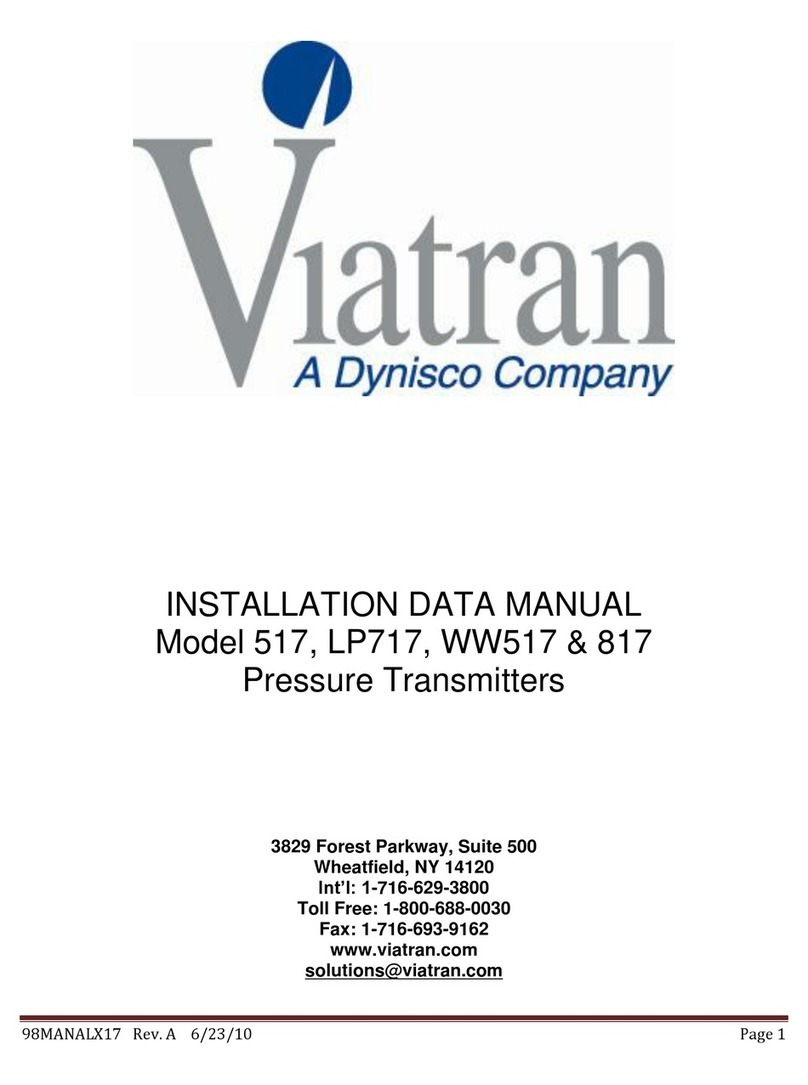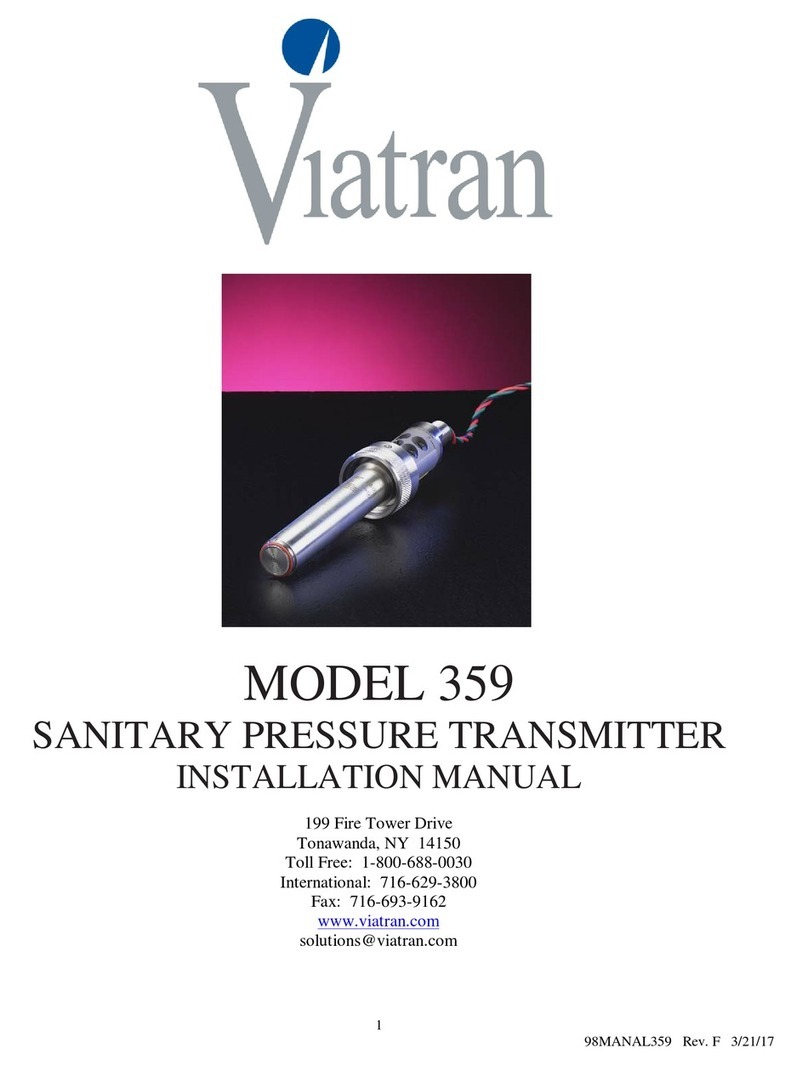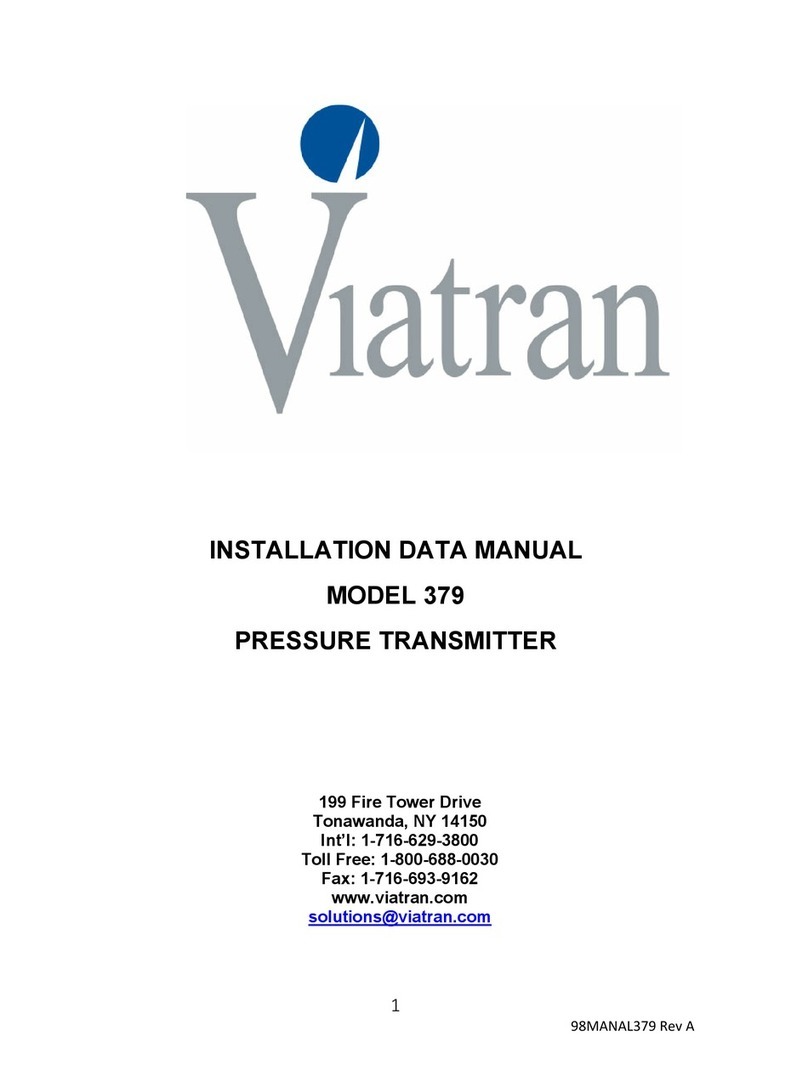
5
98MANAL544 Rev. C3/21/17
ACCESSORIES - OPTIONAL EQUIPMENT
Polypropylene Conduit Connection Box - NEMA 4X (4 Connection, Dual Terminal Block) ......…10000PT-25
Polypropylene Conduit Connection Box (10000PT-25) with 8 Ft. Cable……..……..…................. 003667.003
Polypropylene Mounting Bracket (Surface Mount) ..............………………..…….....…................. 004102.013 Stainless
Steel Mounting Bracket (Surface Mount) ……………...............……........…................................. 004016.002 Mounting
Bracket (2” Pipe Mount) ……………………………………..………............................................... 003633.002 Digital
Indicator (Panel Mount) …….…………….......................…….........…………............................... Consult Factory
Direct Mount Indicator ...………......................................…..................……………..…................ Consult Factory
PREVENTATIVE MAINTENANCE
Note: This checklist should be followed each time a transmitter requires preventative maintenance. Depending on product usage
cycle, all maintenance should be done on a schedule that is reflective of the application.
1. The sensor surface should be visually checked whenever the unit is removed or every 6 months (usage
dependent). Any visible damage, especially deep gouges, pits, or cuts in the sensor, would require the unit to be
returned to Viatran for evaluation.
2. Care should be used when handling the unit by the connection wires. Continued movement of these wires will
weaken the seal. Seal failure will result in internal contamination and non-warranty product failure. Visually
inspect the connection area every 6 months (usage dependent).
3. The module door should always remain closed over the adjustment screws. Constant exposure of the
adjustment screws to mists, dusts or contaminants could cause them to become “frozen” in place, causing the
module to become locked and non-usable. This would render external adjustment difficult at best. Replacement
magnets are available if this problem occurs. Hence a visual inspection of the calibration pots should take place
on a 2 to 4 week schedule, or when extreme environmental conditions require it.
4. NEVER - Strike a presumed failed transmitter. If the transmitter is in working order, the shock could cause
additional failure.
NEVER - Remove a transmitter from an instrumentation loop with the power on. Protection circuitry designed to
absorb small power surges could become shorted and cause transmitter failure due to “arcing”.
NEVER - Ground a transmitter to AC Return (Black). Instant “fatal” failure occurs.
NEVER - Apply input power to the case ground (Green wire). Reduced life span of protection components will occur.
MAINTENANCE AND REPAIR
All Viatran transmitters have been designed to function free from routine or scheduled maintenance. Simple cleaning
of the electrical connector, pressure port threads and pressure cavity on an as needed basis will provide many years
of satisfactory performance. Protecting the product from continued exposure to moisture or fluids at the electrical
connection, breather area (model dependent) will eliminate premature internal failure of the product. Generally any
time the product is removed from service the connector and pressure port threads should be cleaned and the
pressure cavity flushed with a 316 stainless steel compatible cleaner to prevent media buildup.
It is suggested that the calibration be verified on a usage dependent schedule. If the product is in continuous service
7 days a week, then calibration verification may be necessary every 6 to 8 months. If the product is in a lab test
environment a more lenient verification schedule would be appropriate. In all instances the performance of the
product will depend on the individual application or process in which it is installed. More continued usage would
require a shorter period between calibration verification and product maintenance.
If a product is perceived to be exhibiting problems, it can be returned to Viatran for analysis and/or repair. It is
suggested that only Viatran personnel attempt repair of the product. Any damage resulting from customer
disassembly would result in a loss of coverage under the warranty policy. All Viatran products are able to be repaired
at minimal cost if simple cleaning and precautions are taken in the handling and application of the product. Older
products returned for repair are updated to current specifications unless the repair cost would outweigh the cost of a
new replacement model. Products returned for repair should include information on the person to contact for repair
quote approval, the individual to contact if Viatran’s technical staff requires additional information during analysis, and
a brief description of the problem associated with the product’s failure.
WARRANTY
Viatran Corporation warrants that its products shall be free from defective workmanship and/or material for a period
of twelve (12) months from the date of shipment, provided that Viatran’s obligation hereunder shall be limited to
correcting any defective workmanship and/or replacing any defective material f.o.b. factory. No allowance will be
made for any expense incurred for correcting any defective workmanship and/or material without written consent by
Viatran. This warranty is in lieu of all other warranties expressed or implied.
REPAIR INSTRUCTIONS
Viatran’s Transmitters are designed to be easily repaired and recalibrated if necessary. If a failure occurs, the
transmitter should be returned to the factory for inspection and testing. Please contact the Customer Support
Department at 1-800-688-0030, for a return tracking number and/or a repair cost estimate. A nominal inspection fee
is charged on all units returned to the factory which are not subsequently repaired.
